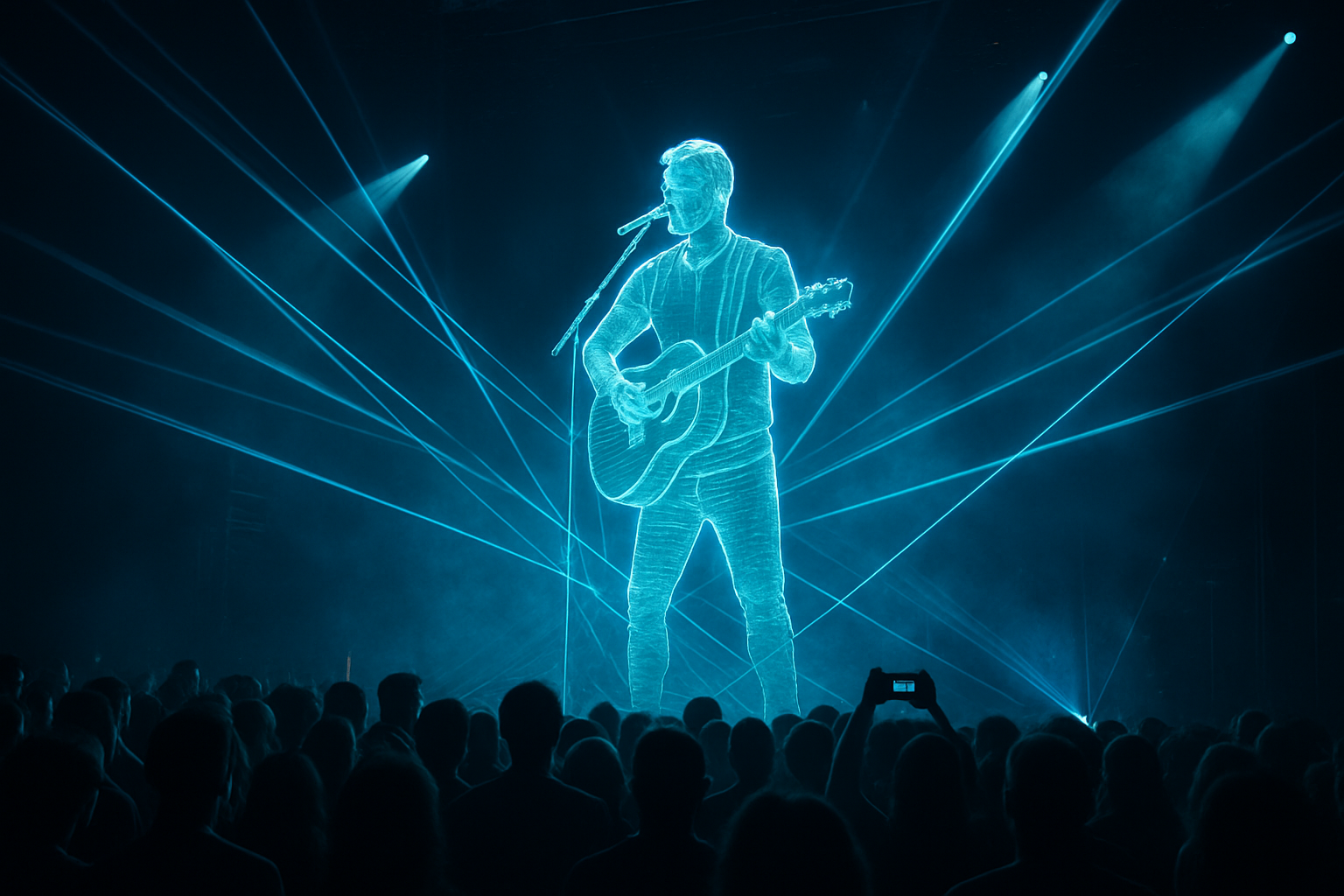Holographic Performances: The Future of Live Entertainment
In a world where technology continues to push the boundaries of what's possible, holographic performances are emerging as a revolutionary force in live entertainment. This cutting-edge blend of art and science is redefining the concert experience, bringing deceased icons back to the stage, and opening up new realms of creative expression. As holographic technology advances, it's not just changing how we experience live shows—it's reshaping the very nature of performance itself.

Resurrecting Legends and Creating New Stars
One of the most talked-about applications of holographic technology in entertainment has been the resurrection of deceased artists for posthumous performances. From Tupac Shakur’s appearance at Coachella in 2012 to Roy Orbison’s holographic world tour in 2018, these digital reincarnations have captivated audiences and sparked debates about the ethics and artistry of posthumous performances.
Beyond Nostalgia: Innovation in Live Shows
While bringing back departed icons has garnered significant attention, holographic technology is also being used to create entirely new forms of live entertainment. Contemporary artists are incorporating holographic elements into their shows, creating mind-bending visual spectacles that blur the lines between reality and illusion. These performances combine live musicians with virtual elements, opening up possibilities for storytelling and stage design that were previously unimaginable.
The Technical Marvels Behind the Magic
The creation of a holographic performance is a complex process that involves cutting-edge technology and artistic vision. High-resolution projectors, specially designed screens, and advanced motion capture techniques are just a few of the tools used to bring these virtual performers to life. Teams of visual effects artists, sound engineers, and choreographers work together to ensure that every aspect of the holographic performance is seamlessly integrated with live elements.
Challenges and Controversies
As with any groundbreaking technology, holographic performances have faced their share of challenges and controversies. Questions of authenticity, artistic integrity, and the potential exploitation of deceased artists’ legacies have sparked heated debates within the entertainment industry and among fans. Additionally, technical limitations and the high costs associated with producing holographic shows have restricted their widespread adoption.
The Future of Holographic Entertainment
Despite these challenges, the future of holographic performances looks bright. As technology continues to advance, we can expect to see more sophisticated and interactive holographic experiences. Virtual collaborations between artists from different eras, holographic theater productions, and even personalized holographic concerts in our homes could become commonplace in the coming years.
Impact on the Music Industry
The rise of holographic performances is having a profound impact on the music industry. Record labels and estate managers are exploring new ways to monetize and preserve artists’ legacies through holographic tours and virtual appearances. This technology is also creating new opportunities for emerging artists to reach global audiences without the need for extensive travel.
Audience Reception and Experience
Audience reactions to holographic performances have been mixed. While many are thrilled by the novelty and spectacle of these shows, others find them unsettling or lacking the raw energy of traditional live performances. As the technology improves and becomes more widespread, it will be interesting to see how audience perceptions and expectations evolve.
Legal and Ethical Considerations
The use of holographic technology in entertainment raises a host of legal and ethical questions. Issues of image rights, copyright, and consent are at the forefront of discussions surrounding posthumous performances. The industry is grappling with how to balance artistic expression and technological innovation with respect for artists’ legacies and wishes.
Holography Beyond Music
While music has been at the forefront of holographic entertainment, the technology is finding applications in other areas of the arts as well. Museums are using holograms to bring historical figures to life, while theaters are experimenting with holographic set designs and virtual actors. The potential for holography to revolutionize storytelling and education is vast and largely untapped.
As holographic technology continues to evolve, it promises to reshape the landscape of live entertainment in ways we’re only beginning to imagine. From bringing back beloved artists to creating entirely new forms of artistic expression, holograms are blurring the lines between past and present, real and virtual. While challenges remain, the potential for holographic performances to create unforgettable experiences and push the boundaries of creativity is undeniable. As we look to the future, one thing is clear: the stage is set for a new era of entertainment where the only limit is our imagination.





